
Asexual reproduction is a type of reproduction that does not involve the fusion of gametes or change in the number of chromosomes. The offspring that arise by asexual reproduction from either unicellular or multicellular organisms inherit the full set of genes of their single parent and thus the newly created individual is genetically and physically similar to the parent or an exact clone of the parent. Asexual reproduction is the primary form of reproduction for single-celled organisms such as archaea and bacteria. Many eukaryotic organisms including plants, animals, and fungi can also reproduce asexually. In vertebrates, the most common form of asexual reproduction is parthenogenesis, which is typically used as an alternative to sexual reproduction in times when reproductive opportunities are limited. Komodo dragons and some monitor lizards can reproduce asexually.

The rotifers, commonly called wheel animals or wheel animalcules, make up a phylum of microscopic and near-microscopic pseudocoelomate animals.
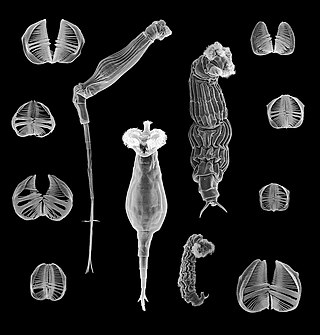
Bdelloidea is a class of rotifers found in freshwater habitats all over the world. There are over 450 described species of bdelloid rotifers, distinguished from each other mainly on the basis of morphology. The main characteristics that distinguish bdelloids from related groups of rotifers are exclusively parthenogenetic reproduction and the ability to survive in dry, harsh environments by entering a state of desiccation-induced dormancy (anhydrobiosis) at any life stage. They are often referred to as "ancient asexuals" due to their unique asexual history that spans back to over 25 million years ago through fossil evidence. Bdelloid rotifers are microscopic organisms, typically between 150 and 700 µm in length. Most are slightly too small to be seen with the naked eye, but appear as tiny white dots through even a weak hand lens, especially in bright light. In June 2021, biologists reported the restoration of bdelloid rotifers after being frozen for 24,000 years in the Siberian permafrost.

Monogononta is a class of rotifers, found mostly in freshwater but also in soil and marine environments. They include both free-swimming and sessile forms. Monogononts generally have a reduced corona, and each individual has a single gonad, which gives the group its name. Males are generally smaller than females, and are produced only during certain times of the year, with females otherwise reproducing through parthenogenesis.
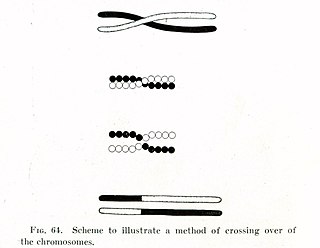
In evolutionary genetics, Muller's ratchet is a process which, in the absence of recombination, results in an accumulation of irreversible deleterious mutations. This happens because in the absence of recombination, and assuming reverse mutations are rare, offspring bear at least as much mutational load as their parents. Muller proposed this mechanism as one reason why sexual reproduction may be favored over asexual reproduction, as sexual organisms benefit from recombination and consequent elimination of deleterious mutations. The negative effect of accumulating irreversible deleterious mutations may not be prevalent in organisms which, while they reproduce asexually, also undergo other forms of recombination. This effect has also been observed in those regions of the genomes of sexual organisms that do not undergo recombination.

John Harris was an English writer, scientist, and Anglican priest. He is best known as the editor of the Lexicon Technicum: Or, A Universal English Dictionary of Arts and Sciences (1704), the earliest of English encyclopaedias; as the compiler of the Collection Collection of voyages and travels, published under his name; and as the author of an unfinished county history of Kent.

Matthew Stanley Meselson is a geneticist and molecular biologist currently at Harvard University, known for his demonstration, with Franklin Stahl, of semi-conservative DNA replication. After completing his Ph.D. under Linus Pauling at the California Institute of Technology, Meselson became a Professor at Harvard University in 1960, where he has remained, today, as Thomas Dudley Cabot Professor of the Natural Sciences.

Cryptobiosis or anabiosis is a metabolic state in extremophilic organisms in response to adverse environmental conditions such as desiccation, freezing, and oxygen deficiency. In the cryptobiotic state, all measurable metabolic processes stop, preventing reproduction, development, and repair. When environmental conditions return to being hospitable, the organism will return to its metabolic state of life as it was prior to cryptobiosis.
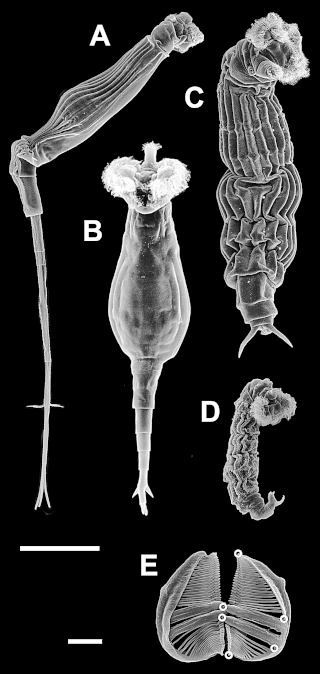
Rotaria is a genus of asexual, microscopic animal known as a bdelloid rotifer. Analysis published in 2007 of morphology and DNA sequence data of species from the genus confirmed that despite their asexual mechanism of reproduction, two fundamental properties of species, independent evolution and ecological divergence by natural selection occurred. This demonstrates that sex is not a necessary condition for speciation.
Osmoprotectants or compatible solutes are small organic molecules with neutral charge and low toxicity at high concentrations that act as osmolytes and help organisms survive extreme osmotic stress. Osmoprotectants can be placed in three chemical classes: betaines and associated molecules, sugars and polyols, and amino acids. These molecules accumulate in cells and balance the osmotic difference between the cell's surroundings and the cytosol. In plants, their accumulation can increase survival during stresses such as drought. In extreme cases, such as in bdelloid rotifers, tardigrades, brine shrimp, and nematodes, these molecules can allow cells to survive being completely dried out and let them enter a state of suspended animation called cryptobiosis.

Habrotrocha rosa is a bdelloid rotifer that has been found in leaf litter, soil, and moss in Europe and New Zealand and also in North America within the pitchers of Sarracenia purpurea, the purple pitcher plant. It is one of many species that make up the inquiline community that thrives within the water-retaining pitcher-shaped leaves of S. purpurea.

The Zoopagomycotina are a subdivision of the fungal division Zygomycota sensu lato. It contains 5 families and 20 genera. Relationships among and within subphyla of Zygomycota are poorly understood, and their monophyly remains in question, so they are sometimes referred to by the informal name zygomycetes.

Gnathifera is a clade of generally small spiralians characterized by complex jaws made of chitin. It comprises the phyla Gnathostomulida, Rotifera, Micrognathozoa, and Chaetognatha. It may also include the Cycliophora.

Dr James Murray FRSE was a biologist and explorer.
Adineta ricciae is a species of freshwater rotifers in the family Adinetidae. It was first described in 2005 after being discovered by chance in dry mud beside a billabong in Australia. It is used as a model organism as it is easy to keep in culture.

Indolepropionamide (IPAM) is a chemical compound with the molecular formula C11H12N2O. In vivo (rats), IPAM markedly reduced the proton potential collapse induced by the mitochondrial toxins to nearly baseline levels in both young and old rats and demonstrated free-radical scavenging properties. IPAM was shown to increase complex I and complex IV activity in the mitochondrial electron transport chain, however complex II and complex III were left unchanged. Decreased activity of complexes I and IV results in an inhibition of electron transport that is associated with higher production of ROS. IPAM can also act as a recyclable electron and proton carrier, facilitating reversible endogenous radical and redox reactions, and thereby enabling the formation of a proton gradient that drives mitochondrial ATP synthesis. Thus, IPAM acts as a stabilizer of energy metabolism in mitochondria, thereby reducing the production of reactive oxygen species.

Habrotrocha is a genus of bdelloid rotifers.
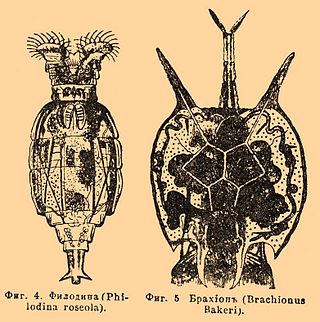
Philodina is a genus of rotifers belonging to the family Philodinidae.
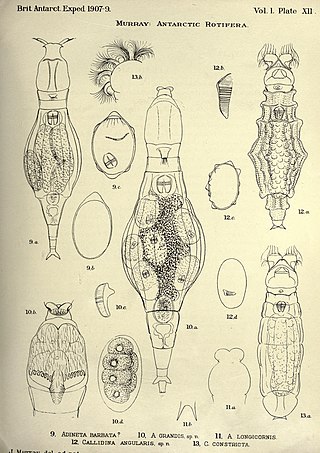
Adineta is a genus of rotifers belonging to the family Adinetidae.

Philodinidae is a family of rotifers belonging to the order Bdelloidea.
















